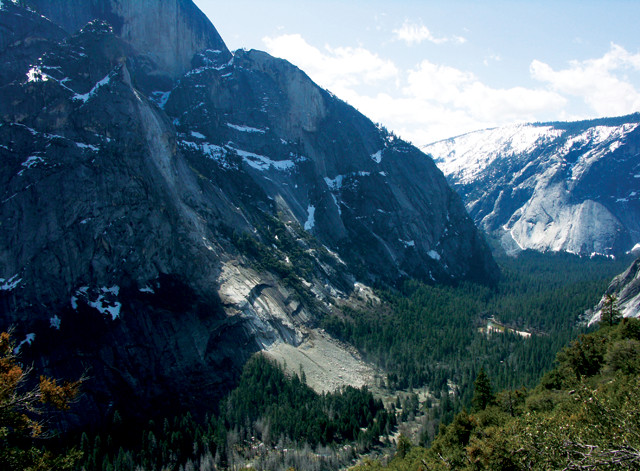
by Timothy Oleson Friday, August 21, 2015

Fresh debris lines part of Yosemite Valley after a rockfall. Credit: National Park Service.
Scores of natural rockfalls occur in California’s Yosemite Valley every year, often with little or no advance warning, posing hazards to people and infrastructure. In 1980, for example, a fall near Yosemite Falls killed three people and injured 19. Efforts to record and document rockfalls are rudimentary, relying only on eyewitness accounts and after-the-fact observations of fresh talus piles, which means many events are likely going unreported. In a new study, however, researchers interested in whether there’s a better way to monitor these events propose that seismic and infrasound sensors can help keep tabs on the granite slabs dropping from Yosemite’s cliffs.
During the winters of 2007–08 and 2008–09, Valerie Zimmer of the University of Canterbury in New Zealand and Nicholas Sitar of the University of California at Berkeley deployed several seismometers as well as an infrasound sensor near a cliff in Yosemite Valley called Middle Brother, a historically active rockfall area. After painstakingly analyzing the data recorded and creating an algorithm to distinguish rockfalls from numerous earthquakes and other seismicity-generating phenomena, the researchers identified where and when 12 rockfalls had occurred during the times they monitored.
Only eight of the 12 events had otherwise been observed, demonstrating “that instrumented monitoring can significantly augment the detection of rockfalls even in heavily trafficked areas,” Zimmer and Sitar wrote in the journal Engineering Geology. However, they noted, 11 of the falls they detected occurred within 1 kilometer of their instruments, indicating that sensors must be placed close to source areas to be effective in monitoring.
© 2008-2021. All rights reserved. Any copying, redistribution or retransmission of any of the contents of this service without the expressed written permission of the American Geosciences Institute is expressly prohibited. Click here for all copyright requests.